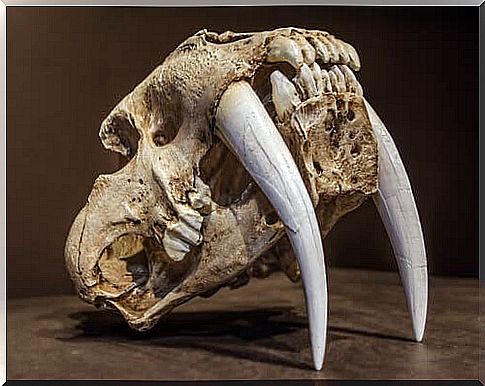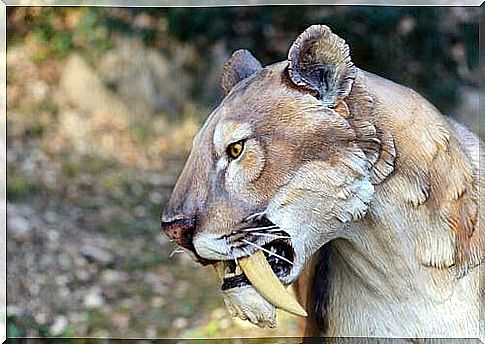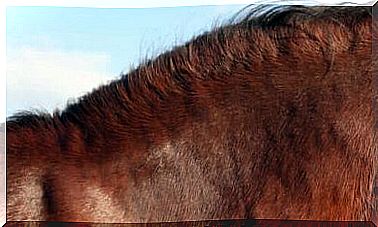The Saber-toothed Tiger: The Most Feared Feline

There is no doubt that the saber-toothed tiger was a majestic animal. With its huge fangs and its great hunting ability, it was for centuries the undisputed master of the ecosystems in which it lived.
This predator, considered the largest and most powerful feline in history, inhabited the American continent about eleven thousand years ago. In this article, we will tell you all about the saber-toothed tiger.
The weapons of a fearsome hunter
The saber-toothed tiger is not just one species, but three, belonging to the genus Smilodon . Males could reach 300 kilograms in weight: it is no coincidence that we are talking about the largest feline that ever existed.
The main feature of this animal was its huge fangs, which were up to 18 centimeters large. Here is some fascinating information about this hunting machine:
- The tusks were used to hunt large prey such as mammoths, in which the saber-toothed tiger specialized.
- Their hunting pattern was very different from that of today’s big cats, which kill their prey by slowly suffocating them. In contrast, the Smilodons used their teeth to cut the arteries in the neck, killing their prey quickly. However, these teeth had a weak point, that is, they broke easily due to their length and shape.
- Saber-toothed tigers were able to open their mouths to bite at a wide angle of up to 120 degrees. For example, the lion’s mouth today only reaches 65 degrees.
- Other physical characteristics of this tiger were the powerful hind legs, which served to hunt very large prey such as mammoths. To achieve this, they used all their muscular power to jump on prey and attack the neck directly.

Behavior and habitat of the saber-toothed tiger
Saber-toothed tigers are believed to have lived in groups, although this information is rather uncertain. This would be demonstrated by some fossils showing wounds being healed, suggesting an attitude of mutual care among tigers.
These social groups were premumably composed of one or two dominant males and several females with their young. As for the young, they probably did not develop saber teeth until they reached a certain age. Therefore, it is thought that they remained in the group for a long time to be fed by the adults.
Possible causes of the extinction of the saber-toothed tiger
Climate change and the disappearance of prey
The saber-toothed tiger lived during the Pleistocene, an era characterized by a colder and drier climate than today. In this era, glaciers covered much of Eurasia and North America, up to the Great Lakes.
South of these places, the dominant ecosystem was represented by meadows covered with small bushes. In this habitat, animals such as mammoths and other large mammals lived on which the Smilodons fed .
About 13,000 years ago, a spectacular rise in temperatures began that completely changed ecosystems, favoring tree growth at the expense of grasslands. This caused a mass extinction of large animals, such as the mammoth or giant deer, both prey to the saber-toothed tiger.
Some authors point out that the predilection for such large prey was what ultimately caused the demise of this tiger. With such a solid build, it was difficult to adapt to a world where prey was much smaller. Eventually, they gradually ran out of food, which accelerated extinction.
Scholars confirm that the saber-toothed tiger became extinct because it was too specialized in hunting large prey. The extinction of the megafauna was the reason for the disappearance of these felines and giant bears.

Hunting by humans
Other paleontologists have speculated that the cause of the saber-toothed tiger’s extinction was the expansion of Homo Sapiens . However, there are studies showing that 80% of North America’s large mammals went extinct shortly after humans arrived on the continent.
Therefore, saber-toothed tigers were decimated by lack of prey, not by direct hunting by humans.
Although it is not yet known what is the cause of the extinction of this majestic animal, fortunately we are aware of the existence of one of the greatest predators of all time through the reconstructions of numerous fossils.









